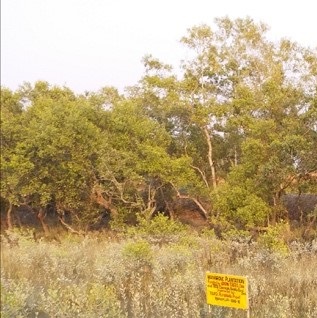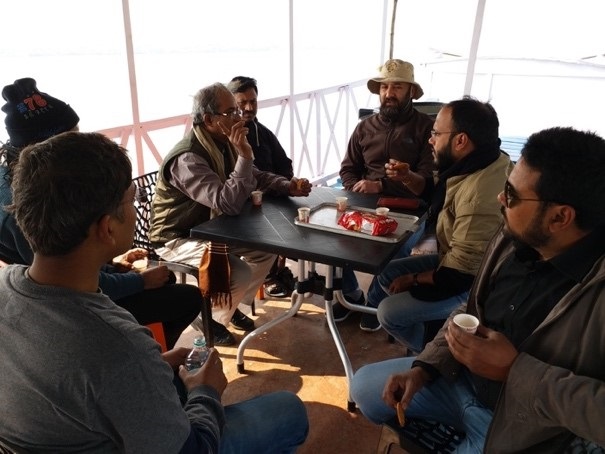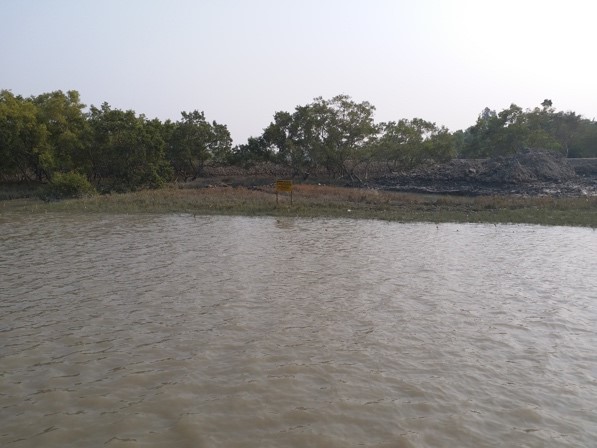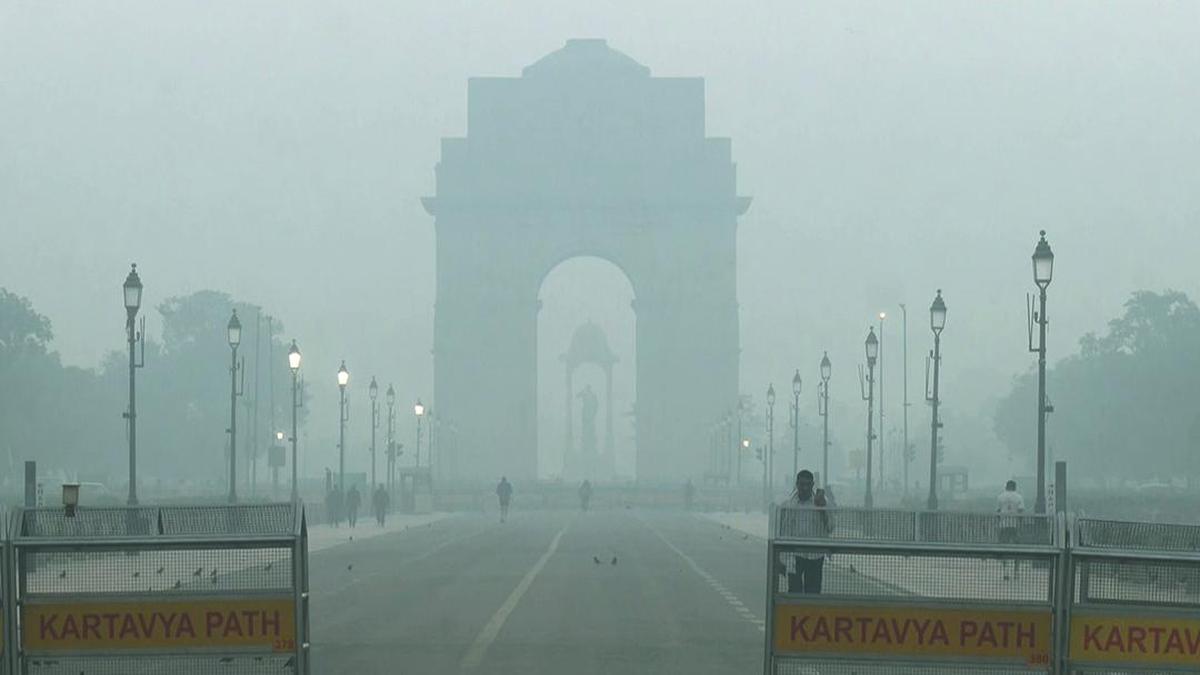Views
20
Field Visit Update: December 27-28, 2018


Summary:
Grow-Trees have been implementing mangrove tree plantation programme as Trees for Forest and Wildlife consecutively for seven years at the periphery of Sunderban Tiger Reserve, West Bengal. The programme is being carried out with support from Tata Chemical Foundation for the mangrove plantation. The programme involves plantation of local mangrove species mostly jat bain(Avicennia officinalis), peyara bain(Avicennia marina), kalo bain(Avicennia alba), kankra(Bruguiera gymnorrhiza), garjan(Rhizophora apiculata), pasur(Xylocarpus mekongensis) and math garan(Ceriops tagal). A field visit to the plantation sites and discussion with the local stakeholders conducted during December 27-28, 2018.
Programme objectives:
To protect the mangrove habitat with native tree plantation
To create rural employment opportunities with the project implementationand monitoring
To create natural embankment with valued mangrove plantation
Field visit objectives:
To monitor and follow up with the plantation programme
To interact with the local stakeholders
To gather primary field information regarding the project implementation
Grow-Trees representatives:
1. Mr Bikrant Tiwary, CEO
2. Mr Basant Kr. Sharma, Project Coordinator
Activity:
Grow-Trees with support from Tata Chemicals Foundation has been implementing a yearly plantation programme since the year 2011-2012 at the mangrove of Sunderbans Tiger Reserve in South 24 Parganas district of West Bengal. The plantation project aims at improving the wildlife habitat, to create more livelihood opportunities among the locals and to prepare the natural embankment with mangrove tree plantation securing the landscape ecology. At the local level, the project is monitored with the help from the Tagore Society for Rural Development (TSRD)with its activity based in the state. A field visit to the plantation sites at the Sunderban Tiger Reserve conducted during December 27-28, 2018. Grow-Trees representatives were accompanied by the program executives from the Tagore Society for Rural Development during the on-site visit. Villages and mangroves of Rajapur, Phakhirala, Kachukhali and Ranipur in Gosaba Range of South 24 Parganas were covered during the two- days field visit.

Discussion:
Mangroves form the most importantand unique feature of Sunderbans forests with their ability to thrive both indry as well as flood like conditions. Due to the presence of both saltwater andfreshwater, both types of plants are present and support the habitat intheir unique way. The loss of the land due to rising sea levels anderosion is causing not only the ecological disruption but also bringing thedisplacement of rural communities and exacerbating poverty. The loss ofmangrove cover in the area is alarming. Thus emphasising the importance ofmangroves in the food web of coastal ecosystems and to arrest the furtherdegradation and to improve the both the terrestrial and the aquatic life of thearea the plantation project has been formulated.

Peculiar mangrove species includesmostly jat bain(Avicennia officinalis), peyara bain(Avicennia marina), kalobain(Avicennia alba), kankra(Bruguiera gymnorrhiza), garjan(Rhizophoraapiculata), pasur(Xylocarpus mekongensis) and math garan(Ceriops tagal) forplantation. Yearly eight hectares of land opted to carry out the mangroveplantation in the identified area. Mangrove consists plantation of 7000 species(approx.) per hectare area, which is comparatively very high over any otherecological site. Plantation of over 350,000 saplings has been successfullyconducted in the past seven years in the mangrove.
In the words of Mr A Bhattacharya (TSRDs representative), the plantation has the significant impact on improving the mangrove ecology, several species of birds are getting attracted, fishing production has improved so as the quality of the water. Similarly, Mr S Banerjee (Coordinator, TSRD) pointed out that the plants are working as the wind-checker as well as helping in the conservation of the embankments.
The plantation of mangroves aroundvillages at the Periphery of the Sundarbans National Park has directimplication in rural livelihoods by creating jobs in nursery and plantingactivities, improve fisheries catch, provide flowers, fruit, fodder and fuel torural communities and wildlife, improve carbon sequestration potential of theforests, fight climate change, and benefit endemic wildlife including theendangered Tiger.


Participants list:

Subscribe to our newsletter and recieve a selection of our cool articles every week.

When Mumbai’s Morning Haze No Longer Feels Like Home
Mumbai Weather Update: AQI Turns Severe as Thick Haze Persists, Free Press Journal (FPJ).
Nov 24, 2025

Delhi Is Gasping Again, And This Time, Even the Clouds Refused to Help
Delhi is choking again. AQI levels have slipped into the ‘severe’ zone, cloud seeding failed, and emergency measures barely make a dent. Because the city doesn’t need one-off fixes, it needs long-term healing. Trees remain the simplest, most effective answer. They absorb carbon, trap dust, cool the air, and act as natural lungs. If Delhi wants cleaner winters, it needs more green cover, not just temporary interventions. Clouds may not cooperate, but trees always will.
Nov 17, 2025
Copyrights @ 2025 All rights reserved by Pangea EcoNetAssets Pvt Ltd.